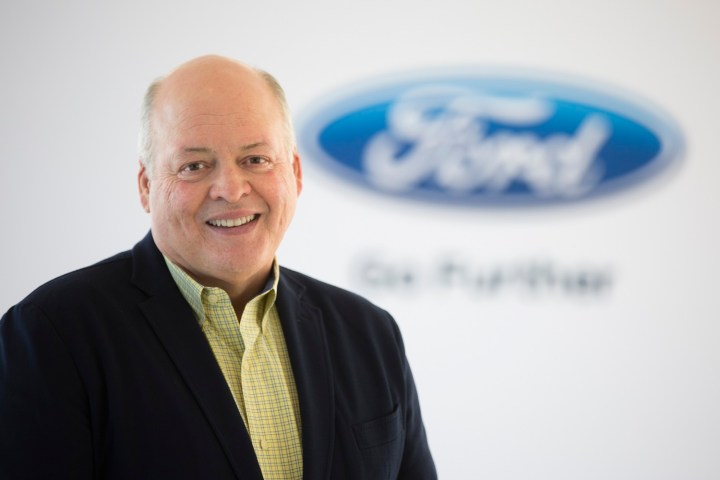
Ford appointed 62-year old Jim Hackett to replace Fields. The move is significant because Hackett was previously in charge of Ford Smart Mobility, a subsidiary established a little over a year ago to develop and invest in mobility services. He ran a furniture company named Steelcase for nearly 20 years, and he’s a well-respected figure in Silicon Valley.
Bill Ford — the company’s executive chairman — and members of the board are eager to steer Ford into a new era of technology. The Detroit-based company has already invested billions of dollars into electric powertrains, autonomous technology, and ridesharing services to keep up with rivals like General Motors, Uber, and Tesla.
Hackett faces a task of Herculean proportions. His first priority is to make Ford faster, leaner, and more profitable. He needs to further improve the quality of the company’s products, ensure new models reach the market in a timely manner, and decisively address under-performing parts of the business, according to a statement published by the company.
He is also expected to modernize Ford by accelerating the adoption of new technologies like artificial intelligence, big data, 3D-printing, and advanced robotics. Finally, he needs to make sure the company is ready to tackle future challenges, including the rise of self-driving cars, shifting consumer tastes, and ever-tighter emissions regulations that will soon come into effect in key markets like China and the United States.
“The future is not a fantasy. It’s not where Bill [Ford] and I are making things up. We talk to lots of people around the world who are really smart. We’re triangulating all of these forces to try to come up with a competitive set, to figure out where we’re going to play and how we’re going to win,” affirmed Hackett in a press conference held at Ford headquarters.
Ford promoted three executives to help Hackett get the job done. Jim Farley is in charge of global markets, and responsible for putting the company’s under-performing Lincoln division back on track. Joe Hinrichs is running global operations, while Marcy Klevorn is replacing Hackett at the head of Ford Smart Mobility.
Editors' Recommendations
- Ford recalls more than half a million SUVs over fire risk
- 2021 Ford F-150 hybrid first drive review: Tech can be tough
- After two decades, the Ford Bronco returns with plenty of tech for the trail
- 2021 Ford Mustang Mach-E will offer Active Drive Assist hands-free driving tech
- Mechanics will use Bosch’s VR tech to learn how to fix the Ford Mustang Mach-E




